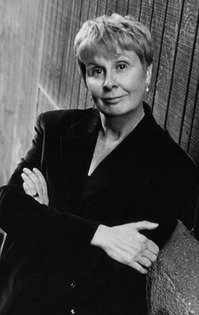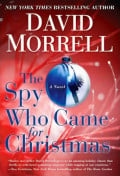Women Of Mystery And Suspense Part 2

While the Golden Age Cozy mystery novels were on the rise in the 1920's another type of mystery genre was taking shape in America; the Hard-Boiled or crime novel. The crime fiction is very different than a golden age cozy mystery. The settings are usually the 'mean streets' of a city; taking the reader through the sleazy and glamorous sides of cities.
The crime novel is more about action and surviving against all odds. There is a tough world view where the good guys win but the victory is hard won. While trying to solve the crime the protagonist tries to stay uncorrupted in a very corrupt world. The hero is usually a loner. The crime novel is essentially seen as American; with elements the outside world sees as American.
An element that was added with the crime novel is the telling of the story by the protagonist; first person narrative. With the hero as the narrator this leaves out much of the surprise deductions and reasoning and has a detective that heightens situations in the story rather than thinking it out. The hero in crime novels experiences physical action and many are good talkers with sharp repartee.
In crime novels with women detectives there are no passive women detectives. There is a mixture of violence and introspection. For the woman protagonist not to come across as a 'monster woman; a violent woman that would repel readers introspection and realization is used. In situations where the female heroine uses violence to protect herself or others it is rationalized and at times apologized to the reader for what they must do in their job.

The Mother of the Female Private Detective Series
Marcia Muller has been called the mother of the female private detective series. In 1977, Marcia began her Sharon McCone series with the publication of “Edwin of the Iron Shoes” a thriller and a mystery novel. The Sharon McCone character is an intelligent level-headed female private detective. Marcia is excellent at showing characters in a series grow and change over time as they move through phases of life. Besides the Sharon McCone series, Marcia has also written short stories, Westerns and mystery short stories. Marcia Muller’s crime novels helped pave the way for other women crime novel writers.
Sue Grafton’s private detective Kinsey Milhone was introduced in 1982 in "A is for Alibi" the beginning of Sue Grafton’s alphabet books. The private detect Kinsey Milhone is a traditional detective: a loner with a personal code. Sue Paretsky’s V. I. Warshawski novels are about a Chicago private investigator V.I. Warshawski. Sara Paretsky helped found the organization "Sisters in Crime" that offers networking and support to mystery authors, it currently has 3600 members in 48 chapters world-wide. The "Sister in Crime" mission statement is: “Raising professionalism and achieving equity among crime writers."
Although the hard-boiled crime novel began in America writers in other countries are writing crime novels. Karen Fossum with her Inspector Konrad Sejer series set in Norway. British crime fiction writers Val McDermin with her Kate Brannigan series, Anne Cleeves with her Detective Inspector Vera Stanhope series, and Ann Granger mysteries featuring Mitchell & Markby. Fred Vargas (pseudonym of Frédérique Audoin-Rouzeau) police thrillers with Chief Inspector Adamsberg are set in Paris. In Sweden, Karin Alvtegen stand-alone psychological thrillers are generally set in Sweden. Alex Grey set her series in Scotland featuring Detective Chief Inspector Lorimer and Solomon Brightman. The field of women crime novel writers continues to capture reader’s interest and continues to grow.
Mystery fiction falls into two categories cozy fiction or crime fiction with sub-categories and some mystery novels overlap categories.
Police Procedural
Police procedural novels are written from the point of view of the police investigating the crime and shows the activities and procedures of the police force as the crime is investigated. A number of the police procedural mystery writers do not have police experience but show accurate police procedure in their novels. Catherine Coulter writes police procedural mysteries with her FBI thrillers, featuring Dillon Savich and Lacey Sherlock, filled with complicated plots, adventure, and mystery. There are many women writers in this sub-genre who were police officers, a few in this category are: Robin Burcell the author of the Inspector Kate Gillespie series and Laurie Drummond set her stories in Louisiana about Baton Rouge policewomen.
Historical Mysteries
Historical mysteries are set in a past time period. They can be set in the present and the past; moving between time periods to tell the story. The detective in the novel can be a real person or a fiction person.
Lillian de la Torre (pseudonym for Lillian de la Torre Bueno McCue) first published in 1945 wrote a series of historical mysteries with a detective "Dr. Sam Johnson". Lillian made Samuel Johnson (18th century lexicographer and author) and James Boswell (his biographer) into detectives. She would also weave real people from history into her mystery plots. Lillian specialized in historical mysteries; fictional and nonfictional.
In the 1970’s, historical mysteries attracted more readers with the publication of Ellis Peters Brother Cadfael novels set in medieval Shrewsbury. Anne Perry historical mysteries are set in Victorian-era England. She tells compelling stories of the 1800s. She writes novels with a Victorian policeman Thomas Pitt and his well-born wife Charlotte and a second series with private detective William Monk and a Crimean War nurse Hester Latterly. Elizabeth Peter's writes historical novels with the character Amelia Peabody, a Victorian lady, an early feminist, and an archaeologist set in the 1800's.
Sharyn McCrumb's Ballad mysteries tell the past to help explain the present in her stories. In "The Ballad of Frankie Silver" three time periods are written about; the colonial period, the present, and about 30 years from the present time. Sharyn McCrumb is the best I have read in moving between time periods in a story, it does not get confusing and holds your interest. Sharyn's Ballad series is set in the Southern Appalachians.
The historical mystery genre has increased in popularity and more women writers are writing historical fiction. Diane Day's Caroline Fremont Jones set in San Francisco at the turn of the last century. Miriam Grace Monfredo created librarian Glynis Tryon, set in the 1800s in Seneca Falls, New York. Laurie King's Mary Russell series, fifteen-year-old Russell meets Sherlock Holmes and becomes his apprentice, set in 1900s England. I. J. Parker Akitada series is set in the eleventh century with a Japanese nobleman detective.
Romance Mysteries
Romance Mysteries are a sub-genre of romance novels. The mystery/suspense is part of the plot. Usually the heroine is helped by the hero and by the time the mystery is solved a relationship has evolved between the two. Sandra Brown writes romance and romance mysteries. Her “Envy” is a pleasant surprise creating terrific suspense, a well written beautifully crafted story.
Gothic romances have a dark brooding atmosphere combining mystery and some romance, often set in a dark castle or decaying house, with hidden secrets. At times there will be included a touch of the supernatural with real or imagined ghosts or vampires. From Emily Bronte's Wuthering Heights and Charolette Bronte's Jane Eyre, Daphne du Maurier's Rebecca, to the Gothics romances of Mary Stewart, Dorothy Eden, Victoria Holt, and Velda Johnson to today’s author Diane Sutterfield are read and enjoyed by old and teens.
Mysteries
Do you enjoy reading mysteries?
Women mystery writers write cozy mysteries, hard-boiled crime mysteries, and in the sub-genres of the mystery category. Some have male detectives and some have female detectives. Some include social issues in their mystery novels. From the light romance mystery to the hard-boiled crime mystery to the gothic romances they bring entertainment to the reader.










